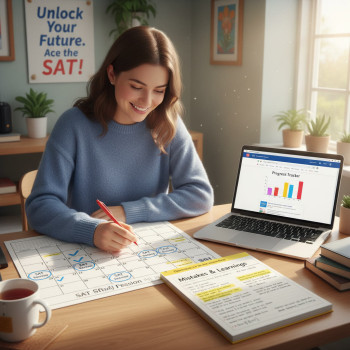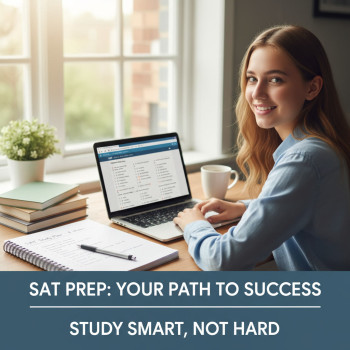Why this guide — and why the Digital SAT matters now
If you’re reading this, you’re probably juggling classes, extracurriculars, essays, and the constant question: “How does the Digital SAT fit into all of this — and how do I make it work for admissions to selective colleges?” This guide is for students and parents who want a clear, practical breakdown of the testing landscape and how it ties into applications to the Ivy League, top U.S. private and public universities, and global institutions.
The SAT is no longer the paper, pencil, and bubble-sheet exam your older siblings remember. The Digital SAT is shorter, adaptive in structure, and built with conveniences like a built-in calculator on math sections and clearer reporting tools. That doesn’t make it easier by default — it just changes how you prepare. Understanding those changes and aligning your strategy with the type of colleges you’re targeting will save you time, stress, and energy.

Big picture: Categories of universities and what they typically look for
Colleges can be grouped in many ways, but for clarity here we’ll use four practical buckets:
- Ivy League — the traditional, ultra-selective private colleges with longstanding prestige.
- Top U.S. Private Universities — selective, often research-driven or liberal-arts heavy, but not Ivy League (think elite, private institutions).
- Top U.S. Public Universities — large public flagships that combine quality with scale and often offer excellent value to in-state students.
- Global Universities — internationally renowned institutions (outside the U.S.) with unique application systems and expectations.
Each bucket values slightly different things: demonstrated academic rigor and exceptional fit for Ivies, a strong blend of academics and distinctive extracurriculars for top private schools, breadth of achievement and academic metrics (often with special regional considerations) for public flagships, and standardized transcripts plus international qualifications for global schools. The Digital SAT is one component among many — but an important, easily understood one that can amplify your application when used strategically.
How selective schools view the Digital SAT
Admissions teams are looking for evidence that you can handle rigorous academic work, think critically, and contribute meaningfully to their campus communities. The Digital SAT provides one standardized view of your skills in Reading & Writing and Math. The newer digital score reports also include richer diagnostic data, so schools and counselors can see where you have strengths and gaps — and that information can be used, quietly, to craft academic narratives in applications.
Important to remember: while many selective colleges are test-optional or test-flexible, a strong SAT score can still meaningfully strengthen an application, especially when your grade trends or coursework context raise questions. For global applicants, or students applying for scholarships and merit aid, standardized test scores remain a useful, comparable metric.
What selective colleges often prioritize (quick list)
- Academic rigor (AP/IB/dual enrollment where available)
- Consistent high grades and upward grade trends
- Compelling essays that show character and intellectual curiosity
- Meaningful extracurricular depth, leadership, or artistic/athletic achievement
- Strong letters of recommendation
- Standardized testing when it complements or clarifies the academic record
How to read the admissions landscape: Ivy League vs. Top Private vs. Top Public vs. Global
This section walks through what each category tends to reward, and how the Digital SAT plays into that profile.
Ivy League — specificity, depth, and exceptional achievement
The Ivies look for students who stand out academically and personally. They want evidence of intellectual curiosity — not just the ability to score questions correctly. In admissions terms that often means a mix of top grades in the most rigorous courses available to the student, compelling intellectual pursuits (research, sustained creative projects, rare experiences), and a personal story that connects the dots.
How the Digital SAT helps: A high Digital SAT score reinforces that you have the quantitative and reading skills to succeed in Ivy classrooms, and the new score report’s content-area breakdown can help you tailor application essays (for example, highlighting quantitative problem-solving in a STEM-focused essay).
Top U.S. Private Universities — fit, narrative, and distinction
Top private universities expect academic excellence but are often more open to varied student narratives. They prize intellectual curiosity but also look for students who bring unique perspectives — whether that’s through interdisciplinary projects, startup experience, artistic training, or community leadership.
How the Digital SAT helps: Use the diagnostic details to highlight specific strengths in your application — e.g., strong data interpretation on math sections for an interdisciplinary economics essay. If test-optional, a strong score can still tip the balance in close decisions.
Top U.S. Public Universities — metrics, context, and in-state value
Public flagships admit many students and have varying levels of selectivity. These schools often place relatively more weight on standardized metrics (GPA, class rank, test scores) because they admit at scale. Public universities also sometimes have regional admissions priorities and generous in-state financial packages.
How the Digital SAT helps: Because public flagships evaluate large applicant pools, a solid Digital SAT score can make your application stand out in an objective way, particularly for competitive majors or scholarship consideration.
Global Universities — different systems, different proofs
Universities outside the U.S. (in the U.K., Europe, Asia, etc.) often use different application mechanics: some emphasize subject-tests or entrance exams, others evaluate a combination of school transcripts, personal statements, and interview performance. For many global schools, the Digital SAT can still supplement your application by providing a familiar metric for understanding readiness.
How the Digital SAT helps: Treat the SAT as one piece that shows global admissions officers that you’ve met an international standard of readiness. If you’re applying to conservatories, certain professional programs, or subject-specific tracks, check each school’s testing expectations carefully.
Digital SAT: what’s new, and what that means for your prep
The Digital SAT changed format and delivery, but the underlying skills — reasoning, comprehension, and math problem-solving — remain central. Key changes you should internalize:
- Shorter overall test time but more time per question — pacing strategies change.
- Adaptive structure at the test-module level: one test form may adapt to performance within modules, affecting how later questions are presented.
- Built-in calculator for the math sections — focus on strategy over manual arithmetic speed.
- Shorter reading passages and questions that emphasize evidence and synthesis.
- Richer digital score reports with content-area diagnostics to guide improvement.
These differences suggest you should:
- Emphasize conceptual clarity and strategy over brute memorization.
- Practice on the actual digital interface whenever possible to reduce test-day friction.
- Use diagnostic reports to guide focused practice on weak content areas rather than generic drilling.
Actionable preparation plan: timeline and milestones
Below is a flexible, practical timeline that students can adapt depending on whether they’re a month away, three months away, or starting sophomore year.
12–18 months before applications (sophomore / early junior year)
- Start with a practice Digital SAT to set a baseline and identify strengths and weaknesses.
- Build a study routine: 2–3 focused sessions per week, mixing content review and full digital practice sections.
- Begin strengthening academic profile: choose challenging courses, seek leadership or research opportunities, and start drafting your activities list.
6–9 months before applications (late junior year)
- Ramp up to 4–6 practice sessions per week, including timed full-length digital tests every 2–3 weeks.
- Use diagnostic reports to create a prioritized study plan (for example: algebra foundations, evidence-based reading, or data interpretation).
- Schedule test dates with buffer time for retakes before application deadlines.
1–3 months before test day
- Simulate test day conditions on the actual Bluebook app or digital platform.
- Polish timing strategies: module-by-module pacing, and when to guess versus skip.
- Focus on light review, confidence-building, sleep, and nutrition — your brain needs recovery to perform.
Study methods that actually move scores
Big-picture, targeted study beats hours of unfocused practice. Here are approaches that produce reliable gains:
- Diagnostic-first: Always begin with an honest diagnostic. You can’t plan well if you don’t know what’s breaking down.
- Micro-goals: Improve one concept area at a time (e.g., linear equations, passage inference).
- Active practice: Explain a problem aloud, teach it to someone, or write out the reasoning steps — these deepen retention.
- Mixed practice: Alternate between question types to build transfer and endurance.
- Review mistakes thoroughly: identify the error type (conceptual, careless, timing) and plan corrective practice.
- Test simulation: replicate testing conditions on the Bluebook app at least twice before the actual test.
How families and tutors can support effectively
Parental support matters — not pressure. The best support helps a student stay organized, balanced, and confident. If tutoring is part of the plan, choose approaches that emphasize personalization and active feedback.
Example: Personalized 1-on-1 tutoring can accelerate progress because a tutor tailors explanations to a student’s thinking patterns, selects targeted problems based on diagnostics, and tracks small wins. Sparkl’s personalized tutoring model — with tailored study plans, expert tutors, and AI-driven insights for focused practice — is an example of how personalized support can fit naturally into a student’s journey when used thoughtfully and in partnership with schoolwork and college planning.
Comparing admission fit across categories: a practical table
| Category | Typical Admission Priorities | How Digital SAT Helps | Actionable Tip |
|---|---|---|---|
| Ivy League | Exceptional academic record, depth of interest, standout essays | High score reinforces academic readiness; diagnostic data supports niche strengths | Show narrative cohesion between SAT strengths and academic pursuits |
| Top U.S. Private | Academic excellence + distinctive personal/professional experiences | Good score helps demonstrate readiness; use score sections to highlight fit | Leverage essays to explain how your academic skills enable your projects |
| Top U.S. Public | Strong metrics, in-state context, major competitiveness | Objective SAT scores can separate applicants in large pools | Aim for a target score that aligns with admitted ranges for your intended major |
| Global Universities | Subject mastery, transcripts, sometimes standardized entrance tests | SAT offers a comparable benchmark for U.S.-based applicants | Check each school’s testing policy and supplement with relevant exams if needed |
Real-world examples and case studies (anonymized and practical)
Case 1 — Emma (aspiring Ivy STEM major): Emma had an excellent transcript but a weak math foundation. Her first Digital SAT showed a clear gap in algebra fundamentals. Her tutor created a 12-week plan focusing on algebra fluency, data interpretation, and timed module practice on Bluebook. She raised her math section score substantially and used a short essay describing a research internship to connect her academic record to future goals. The improved SAT score gave admissions officers confidence that her grades reflected true readiness.
Case 2 — Jonah (public university / scholarship focus): Jonah aimed for a top public university with competitive scholarships. His diagnostic pinged strong reading but modest math. He followed a targeted math plan, used diagnostic reports to prepare for scholarship-specific criteria, and scheduled an early test date to leave room for a retake. The objective score placed him within scholarship consideration brackets and helped secure merit aid.
These examples show how smart, targeted work — not endless hours — moves the needle. Personalized tutoring can accelerate this process by creating efficient, student-specific plans that respect school workloads and extracurricular commitments.
Essays, recommendations, and the rest of the application puzzle
Remember: The SAT is one tile in a mosaic. Essays, letters of recommendation, coursework, extracurricular depth, and demonstrated interest all interact with test scores.
Essay approach: use essays to show how you think, not to repeat what’s obvious elsewhere. If your Digital SAT diagnostic shows particular strengths (like evidence-based reading or data interpretation), consider integrating those strengths into an essay about a research project, science fair, or a club you led — concrete examples resonate.
Letters of recommendation: choose recommenders who can speak to intellectual growth. If a recommender can highlight how you tackled a quantitative challenge or led a data-driven project, that can align nicely with a strong math performance on the Digital SAT.
Checklist: Pre-test and test-day essentials for the Digital SAT
- Download and practice on the Bluebook app or other official digital practice materials.
- Confirm technical requirements and bring any allowed device per College Board rules.
- Bring valid ID as required; know your test center or the testing-day procedures if testing in school.
- Sleep well for several days before the test, and avoid last-minute cramming.
- Practice the digital interface so you’re comfortable with navigation, highlighting, and in-app calculators.
Common myths and the real advice behind them
Myth: “The Digital SAT is easier, so I don’t need to study.” Reality: The format is different, but the skills tested are just as rigorous. You still need strategy and focused practice.
Myth: “If I’m test-optional, I shouldn’t take the SAT.” Reality: If your scores would strengthen your application — especially for competitive majors or scholarships — submit them. Use diagnostics to decide whether the score helps your narrative.
Myth: “All tutors are the same.” Reality: Tutors who use diagnostic-driven, personalized plans and track progress produce faster, more reliable gains. A 1-on-1 tutor who tailors practice to your specific error types — and integrates digital practice — is often worth the investment.
Putting it together: a sample 8-week study plan
Below is a condensed, high-impact plan for students who have about two months before a test date. The key is focus and simulation.
- Week 1: Full diagnostic on Bluebook; identify top 3 weaknesses; set target score.
- Weeks 2–5: Alternate targeted content blocks (math fundamentals, evidence-based reading strategies, grammar & usage) with two timed digital sections per week.
- Week 6: Full-length digital practice test under test-day conditions; deep review of every mistake.
- Week 7: Focused remediation on remaining weak spots; light review of strong areas.
- Week 8: Two shorter simulated tests; taper intensity, emphasize sleep and routine.
If you work with an experienced tutor or a program like Sparkl’s personalized tutoring, they can compress diagnostic insights into weekly action items, maintain accountability, and offer real-time strategies for the digital interface.
Final thoughts: balance, confidence, and the long view
The Digital SAT is a tool — powerful when used thoughtfully, but only one part of a rich application. Colleges want curious learners who will contribute, not just students who can test well. Build a narrative where test scores, coursework, extracurriculars, and essays all reinforce the same strengths.
For families: support routines, celebrate progress, and prioritize mental health. For students: aim for steady improvement, embrace targeted practice, and remember that a strong application is about showcasing how you think and what you care about.
If you want a personalized study plan, targeted diagnostics, and regular 1-on-1 feedback — especially tuned to the digital format — consider tutoring options that blend expert human guidance with data-driven insight. Thoughtful, tailored support can transform a few focused months into a confident application season.

Quick resources to keep on your radar
Keep these practical items in mind as you plan:
- Practice regularly on the official digital interface and treat diagnostics as roadmaps, not judgments.
- Match your testing timeline to your application calendar so you have time for a retake if needed.
- Use targeted tutoring when progress stalls — a few weeks of focused 1-on-1 work often pays off more than months of unfocused practice.
- Don’t let testing overshadow your broader application story: essays, recommendations, and meaningful engagement matter enormously.
Closing — a note to students and parents
This season can feel intense, but remember how much you’ve already accomplished. The Digital SAT is a single test day that supports a larger story about your curiosity and persistence. With a clear plan, smart practice, and the right support — whether that’s a school counselor, a knowledgeable tutor, or a personalized program — you’ll be ready to present your best self to the colleges that matter most to you.
Take a breath, make a plan, and then take it one well-prepared step at a time. You’ve got this.


















No Comments
Leave a comment Cancel